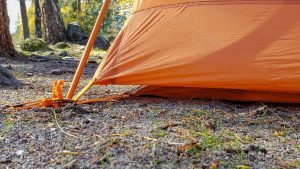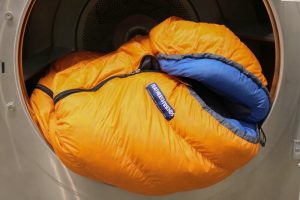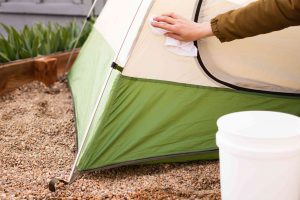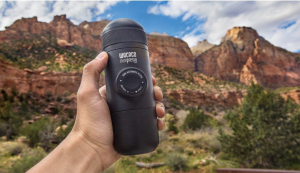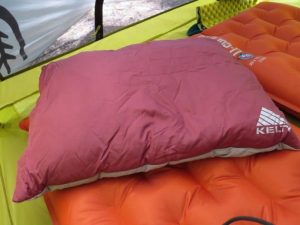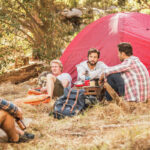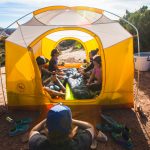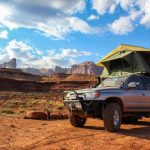Whether you’re hiking, camping, or just out for a day of adventure, it’s important to be prepared. The food you pack and the snacks that fill your backpack will help keep your energy levels high and give you the sustenance needed to make it through an active day on the trail. But what should you eat? What type of food do you need? How much should you bring? this guide will cover everything that you need in order to successfully pack for a trip, including what foods are best for backpacking, what you should eat before starting your journey, and more.
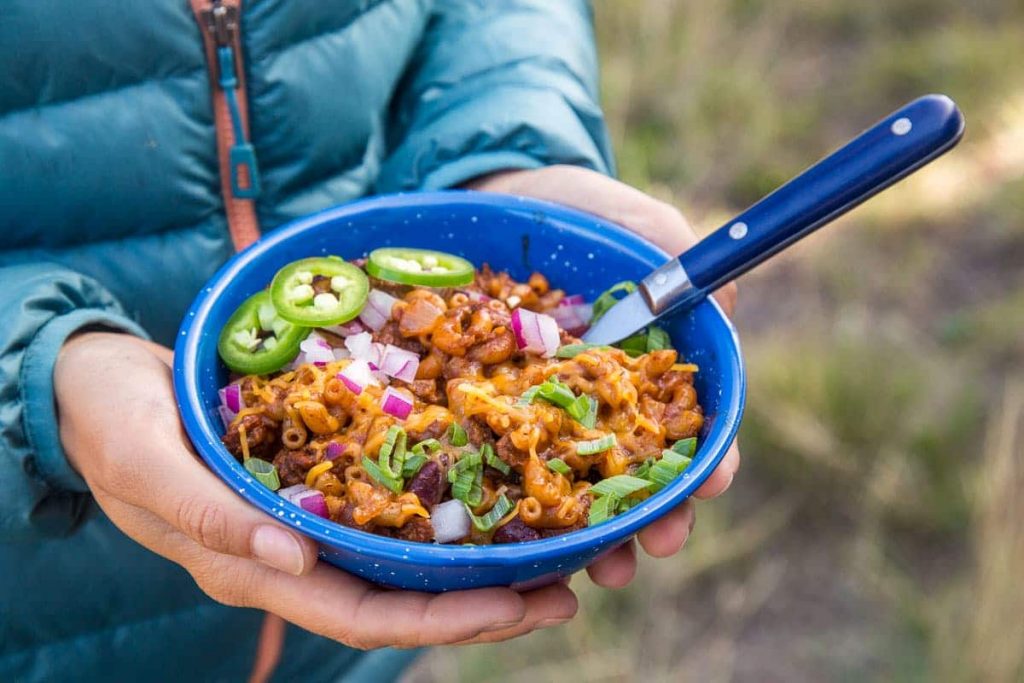
Table of Contents
How Much Food Shoud I Pack?
The amount that you’ll pack will depend on several factors, including:
- Length of your journey
- The intensity of your hike (is it a leisurely stroll or more strenuous?)
- Activities that you’ll be doing on the trail (taking in some amazing views, camping overnight)
- Type of activity or weather conditions

If you are hiking through hot and dry climates during summer days, it’s important to pack more food than you think you’ll need. Bring extra snacks, and even consider bringing some high-calorie foods that won’t spoil easily in your backpack. If you are planning on camping out overnight or spending the day rock climbing with friends, it’s also a good idea to bring plenty of water for hydration.
A good rule of thumb is to follow is about 2,500 to 4,500 calories of food per person per day. This will give you the energy needed to complete your hike, but you should still be able to carry your backpack without feeling too weighed down.
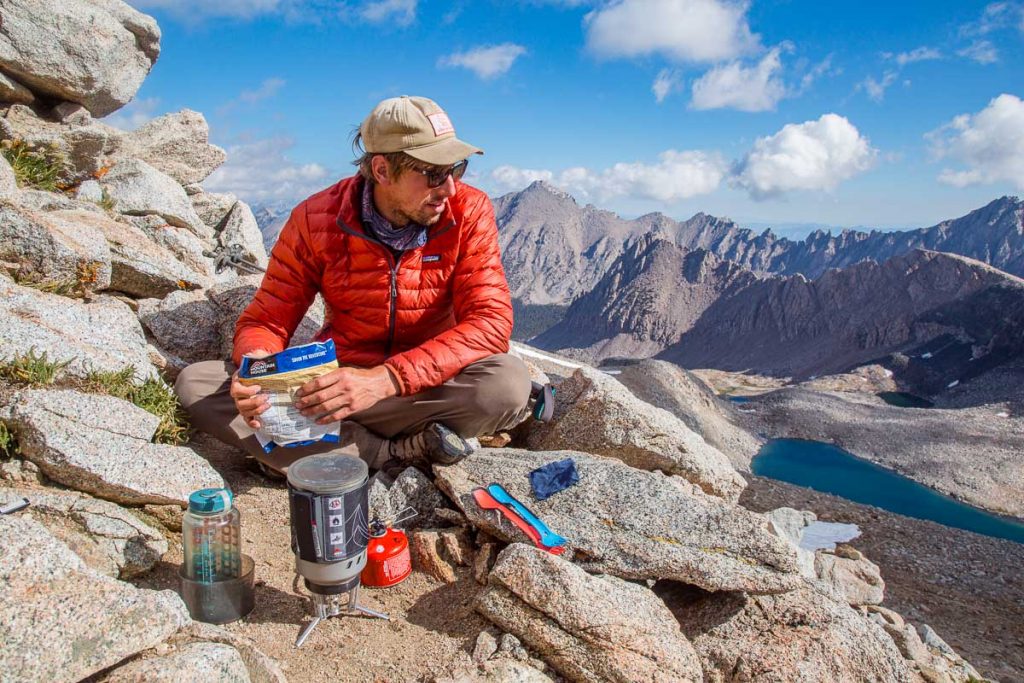
Preparing Food For The Trail
If you’re planning to cook for your trip or want a few hot meals before starting out on the trail, the key is making sure that everything can be easily packed and won’t spoil. Here are a few tips to keep in mind:
- Make sure that all of your food is either dried or can be easily dehydrated; you don’t want anything getting soggy if it gets wet
- Pack anything else into plastic bags, and then pack those items inside the larger bag for easy access at camp. If you’re bringing along dried foods like rice, beans, or pasta, it’s a good idea to pack them in sealable bags so that they don’t get mixed up with your other snacks or dry goods.
- Protein is important, so be sure to pack at least a few options like dried meat or pre-made protein packets.
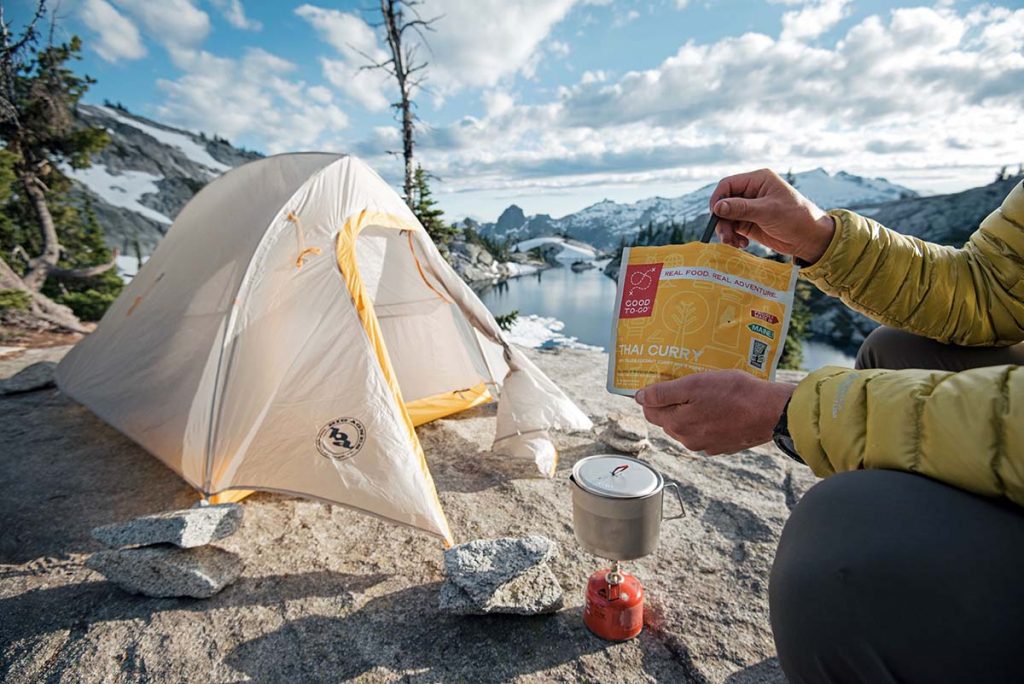
- Make sure that all of your food is lightweight so you can carry as much as possible. If there’s a chance it will get wet, keep it in its own waterproof bag or container.
- DIY food is always a good option, but it can be time-consuming and harder to carry on the trail.
- Freeze-dried can help you save time before your journey, but they do tend to have more preservatives and lower nutritional value than homemade snacks or those you cook yourself.
- If you will be camping overnight or plan on cooking for the trip, keep all of your cookware and utensils inside another bag at the bottom of your backpack. This way, it will be easy to find a camp, but you won’t have to lug around any extra weight.

Food To Eat Before Your Start The Trip
It’s also important to think about what you eat before your trip. If you go on a long hike or camping overnight, it’s best to ease into the activity by exercising and then eating a light meal beforehand. This will help prevent any stomach problems that may arise from going right into strenuous physical activity after sitting around all day. Some good food options include:
- Light protein, like a piece of grilled chicken or a boiled egg
- Carbohydrates, like pasta or rice, will give you an extra boost of energy
Note: it’s not recommended to eat any heavy meals before starting out on the trail. Make sure you’re aware of what foods your stomach can handle beforehand so that nothing slows down your progress once you hit the road.
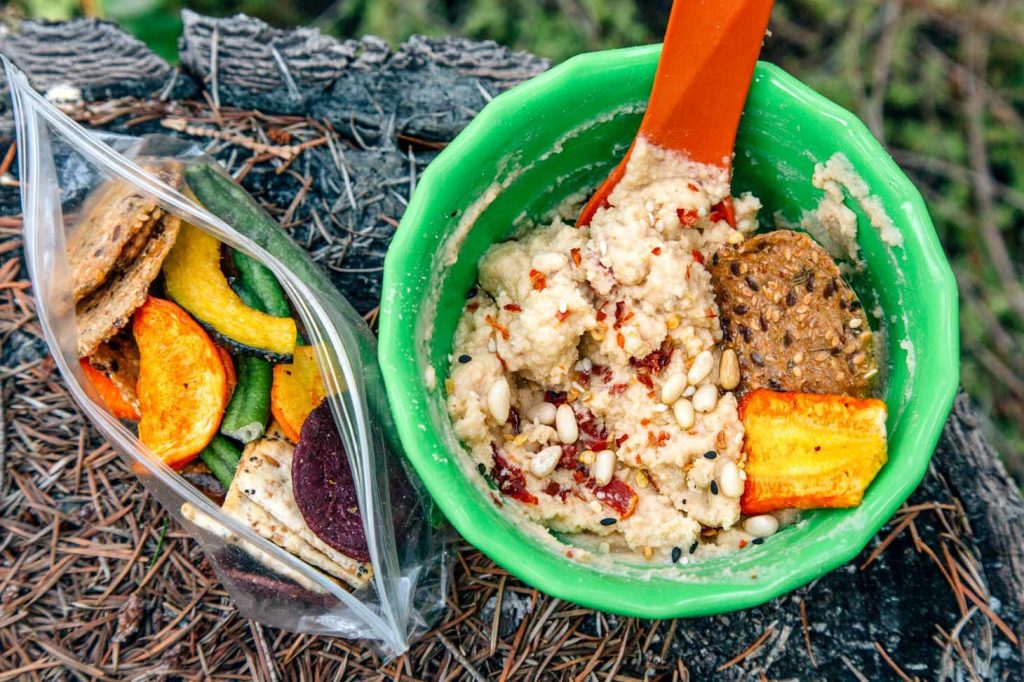
How Often Should You Eat?
It’s important to eat before, during, and after your trip. Do not skip meals or you’ll be tired, hungry, short-tempered, and irritable. You want to stay fueled throughout the entire day so that you can maintain a level of energy even if you don’t have time to stop and eat.
If you’re camping overnight or for a few days, it’s best to pack snacks that will give you enough energy without weighing you down.
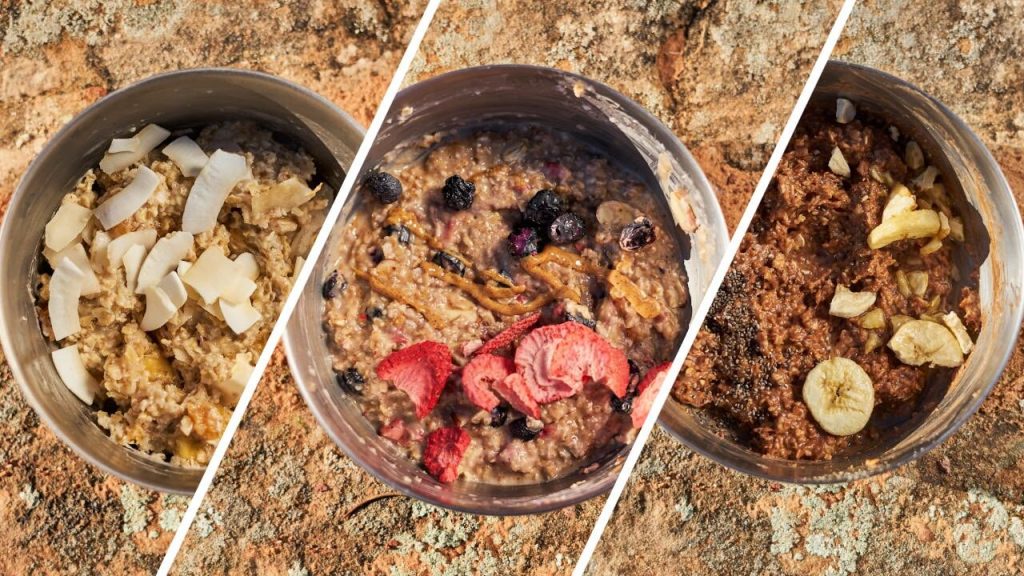
How To Pack Your Food
When packing your food for the trail, it’s important to think about how many meals or snacks you’ll need during each day of your journey and where they will fit in your pack. Here are some good options for backpacking food:
- Pack any perishable items at the top of your backpack to ensure they don’t melt or break open. You’ll want these for whenever you reach camp or stop for a break.
- Zip top, sealable bags are great for storing snacks and pre-made meals. They’re lightweight, compact, and easy to carry.
- Keep everything or any liquid items in their own waterproof bag or container to prevent spoilage and leaks.
- Make sure you organize your food into different bags or containers so that you can easily find what you’re looking for. This will save time and frustration, especially if it’s getting dark and you need to get dinner started.
- If you’re carrying food that needs to be heated, make sure you have the means to do so. This could include a stove or campfire.
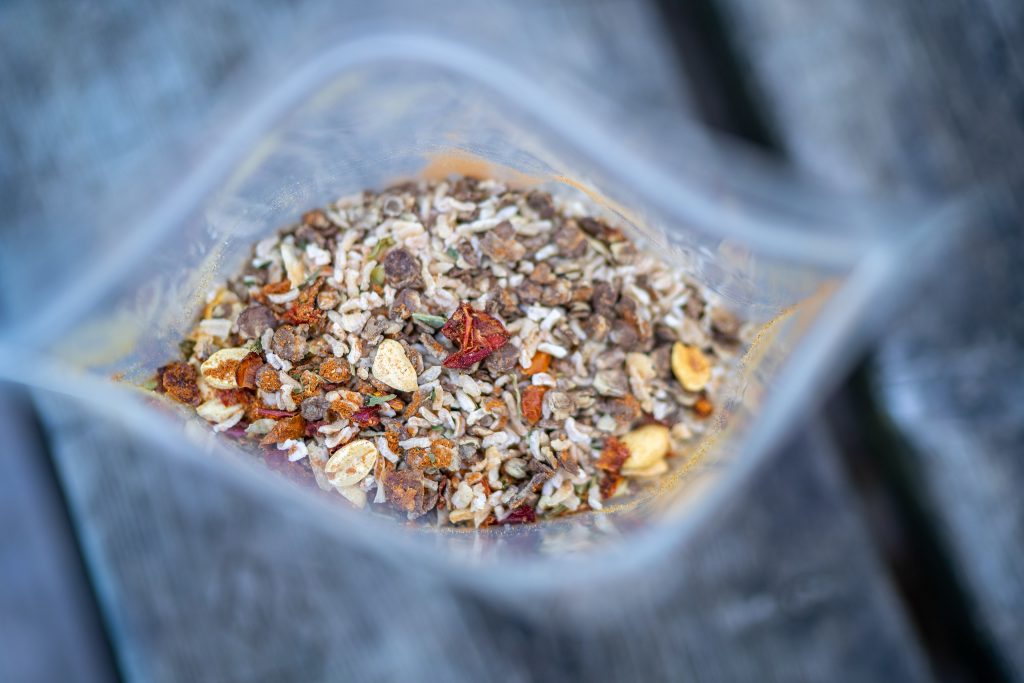
BACKPACKING MEAL SUGGESTIONS
When it comes time to pack for a trip, there are several foods that work well and won’t weigh you down or leave you hungry. Some ideas for foods to pack include:
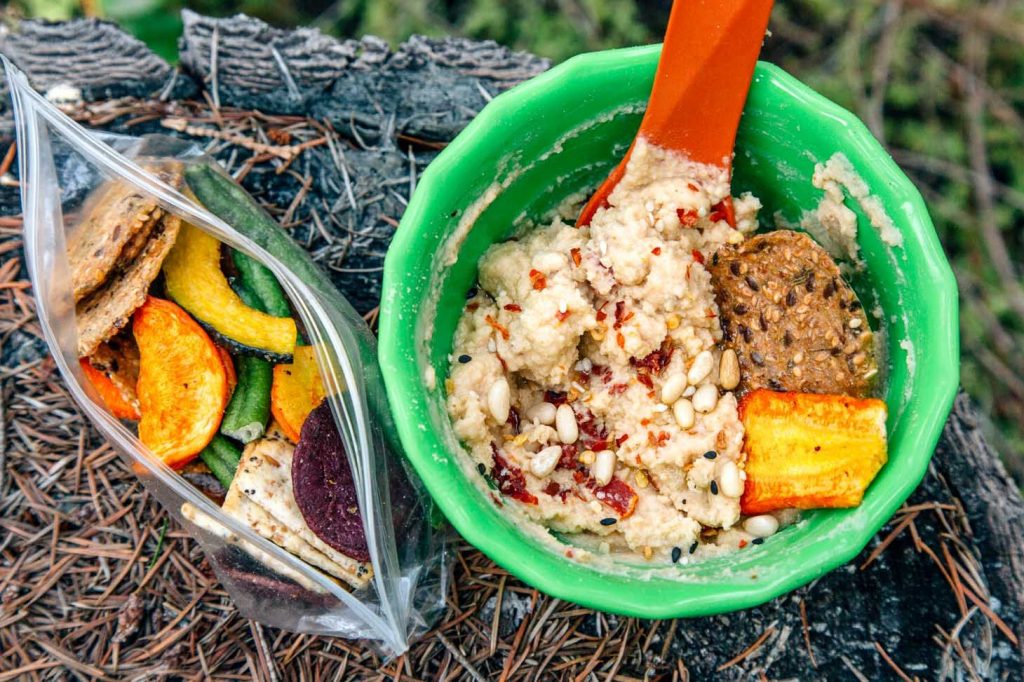
Breakfast
Here’s a list of ideas for your morning meal:
- Granola & Cereal (Powdered Milk)
- Instant Oatmeal
- Dried Fruit
- Protein Bars or Protein Powder
- Peanut Butter & Jam Sandwiches on Whole Wheat Bread
- Coffee & Tea
- Nuts and Seeds
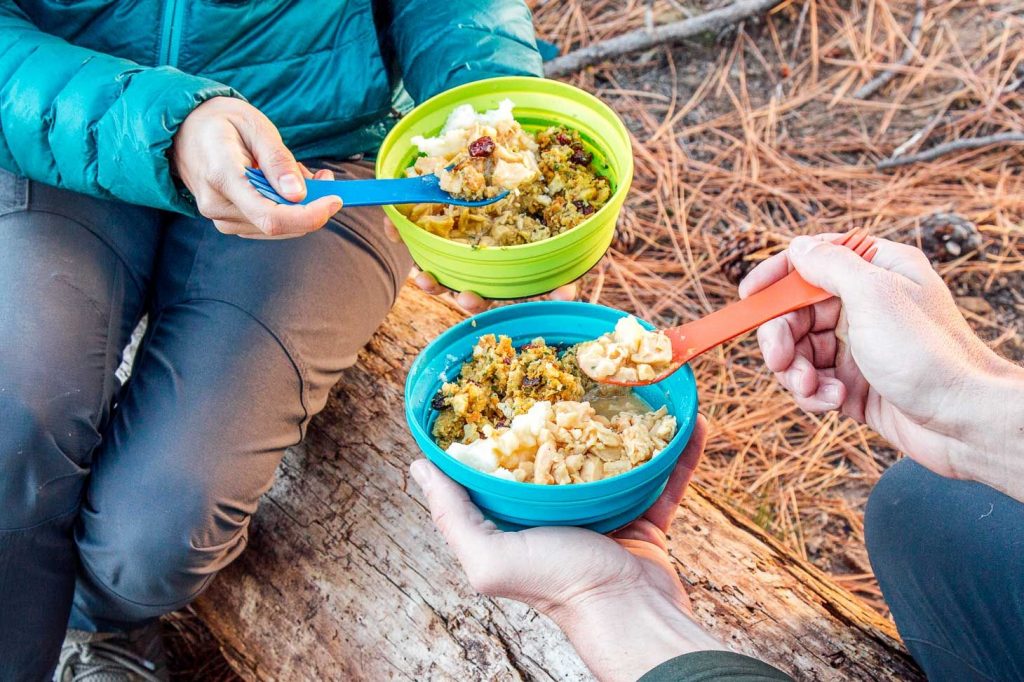
Lunch
Lunch is the perfect time to enjoy a quick and easy meal, such as:
- Energy Bars (Like Clif Bar)
- Crackers and Hard Cheese
- Beef Jerky and Trail Mix (Or Make Your Own)
- Sandwich with Salami, Summer Sausage, etc.
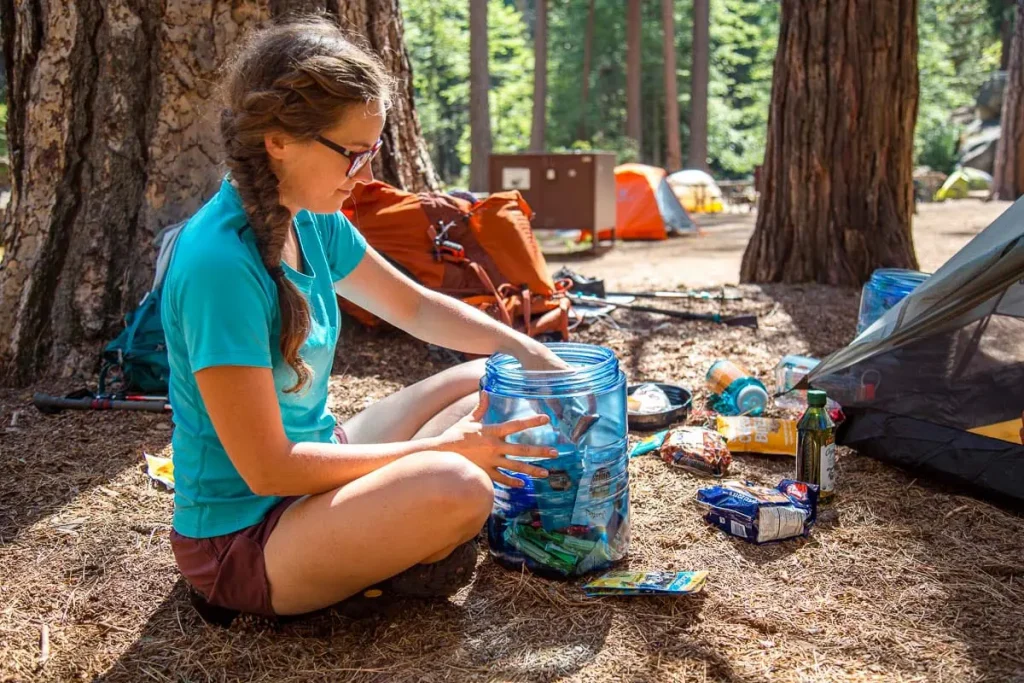
Dinner
Whether you’re looking forward to a hot meal at the end of your day, or just want something easy and quick, there are some good ideas for dinner:
- Rice with Dried Veggies and Chicken (A Good Option if You’re Cooking at Your Campsite)
- Instant Soups
- Ramen Noodles
- Whole Wheat Pasta with Sauce (Packed in a Jar)
- Couscous with Dried Veggies
- Beef Stew (A Good Option if You’re Cooking at Your Campsite)
- Canned Meats
- Beef or Tuna in a Pouch
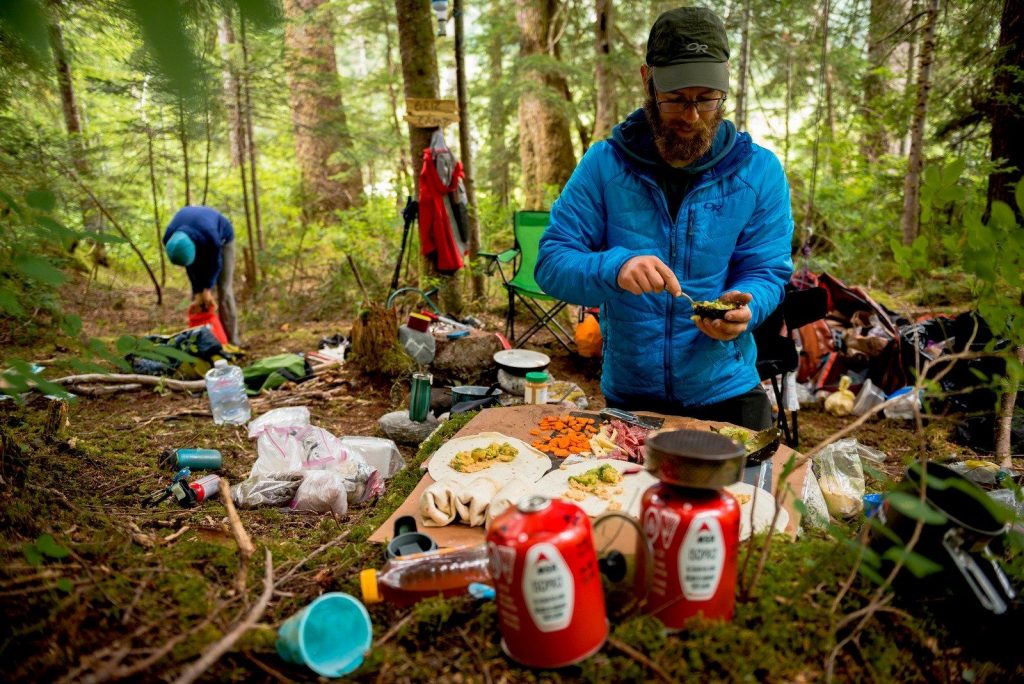
Snacks
Snacks are a great way to keep energy levels up and reduce hunger. Some good choices include:
- Gorp (Trail Mix)
- Dried Fruit
- Chips/Crackers (Be careful to choose ones that won’t leave you with a soggy mess)
- Dried Meats & Jerky
- Nuts and Seeds (again, be careful to avoid anything that will turn against you when wet)
- Chewy Bars (Larabars, Clif Bars)
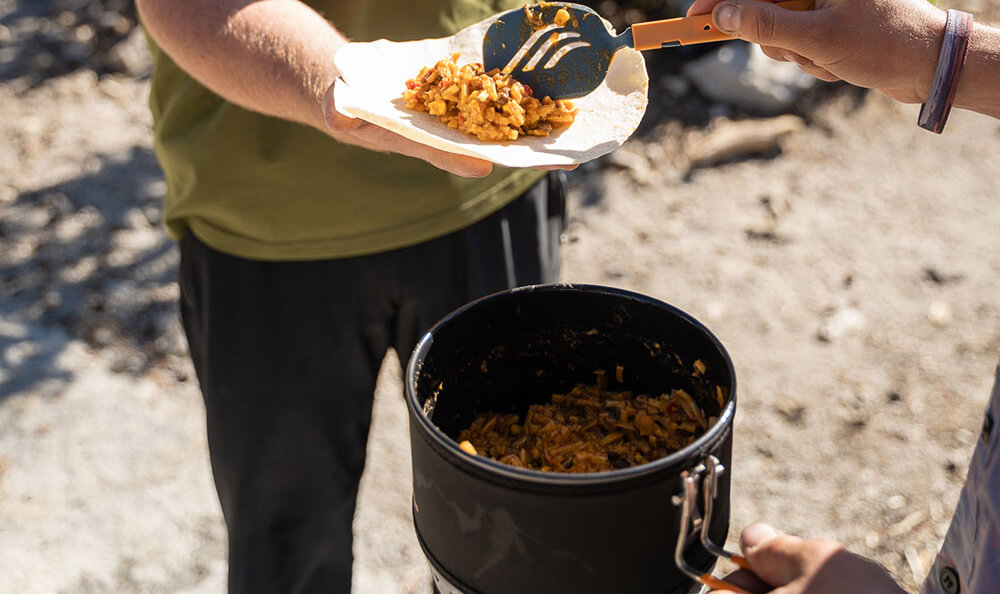
Kitchen Essentials:
When you’re ready to start cooking your meals, it’s important that you set up a clean and functional kitchen. This will be the place you’re going to prepare your food and take care of any dishes that need washing.
- Trash Bags (At least one large and several small, for trash and recyclables.)
- Ultralight Stove System
- Cups
- Spoons
- Food Storage
- Cookpot

Don’t Forget About Water Intake
It’s important to stay hydrated on the trail. Be sure you have plenty of water with you at all times and that it’s easy to carry.
It’s also important to remember that you need different amounts of water depending on the temperature, time of year, and how physically active you are.
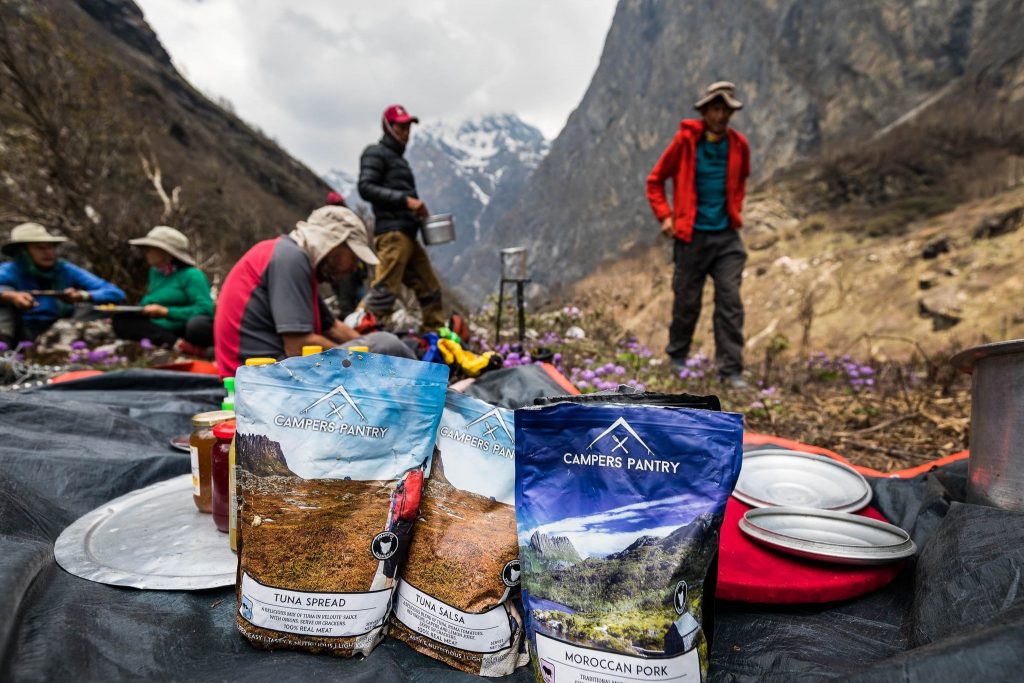
Leave No Trace
When you’re in the great outdoors, it’s important to leave no trace. Pack out all of your trash and make sure you take everything with you when you leave.
If you’re backpacking with a group, try to use the same campsite and avoid impacting trees or plants in any way.
- Don’t start a fire unless you’re sure it’s allowed and that there is an existing area to do so. If you are responsible for starting a fire, be sure to put it out when you are done.
- Bury human waste using the “cathole method.” Dig a hole at least six inches deep and cover it with soil.
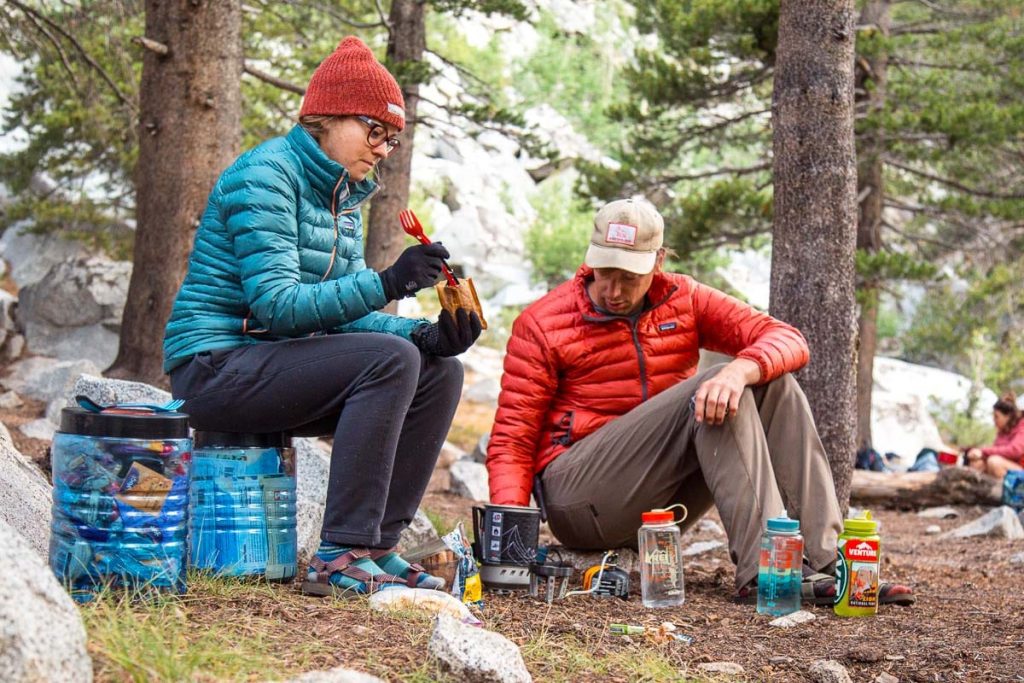
When backpacking, it’s also important to minimize your impact on the environment by following these guidelines:
- Don’t cut live vegetation.
- Don’t try to remove rocks, plants, or other natural objects.
- Don’t disturb wildlife you encounter along the way (this includes bears and mountain lions).
- Pack out all trash and food waste (including fish remains, shells, etc.). Check fishing regulations to make sure you can keep any fish you catch.
Follow proper Leave No Trace practices when you’re on the trail to make sure everyone has a great experience!
Be safe, have fun, and enjoy your time in nature. You can find more information on Leave No Trace here:
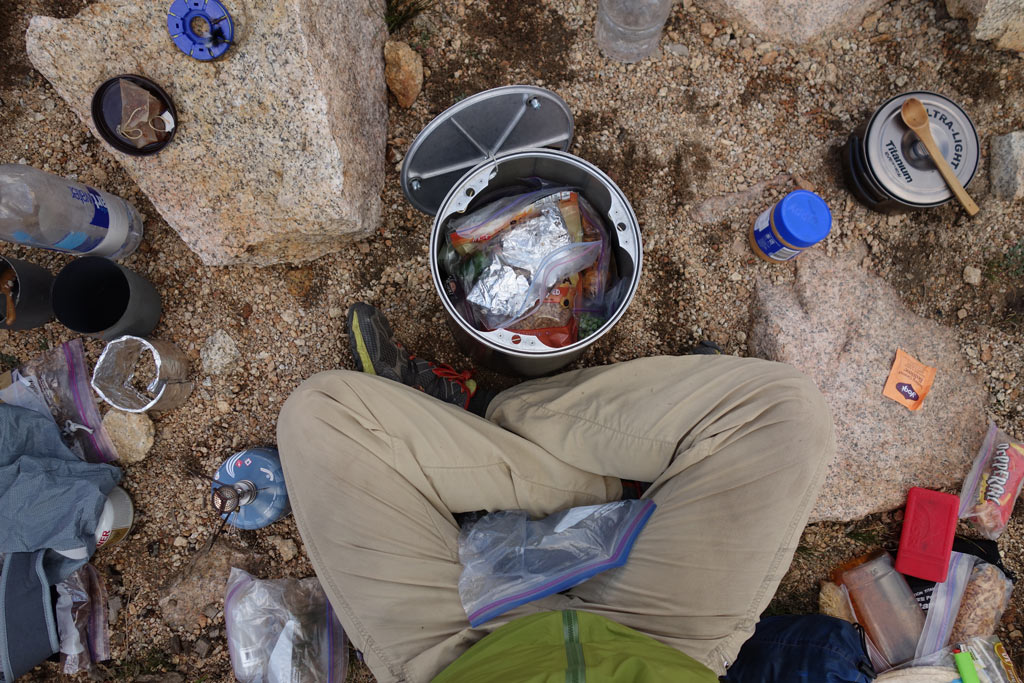
What to Avoid
While most types of foods are acceptable to bring backpacking, there are some that just aren’t practical. Some foods to avoid include:
- foods with heavy oil or grease content, like potato chips, cookies, and other candy bars
- Anything that will melt or spoil, such as cheese and yogurt
- Anything that has a lot of liquid, like soup
- Foods with high fiber content will expand in your stomach and cause discomfort.
- Foods that will easily get crushed or ruined
Foods to Avoid at All Costs: anything creamy or with a lot of sugar; any food that is bulky. While these may seem like good options, they won’t keep your pack light and you’ll end up hungry after the first day on the trail.

FAQ
Q. How should I pack my food?
A. Use a pack that fits your body and is comfortable for you to carry all day long! Be sure the weight distribution is correct so nothing feels too out of place or off-balance, but also make sure everything stays in its proper spot throughout the hike. Make use of any outside pockets on your bag if you have them.
Q. How far in advance should I start planning my meals?
A. It’s best to plan your trip and pack out all of the food you’ll need at least a week before leaving for your backpacking adventure! You can make adjustments as necessary, but it’s important to give yourself some time so that everything is ready and waiting for you when you leave.
Q. I’m not sure what foods to pack! Can I bring snacks instead?
A: Sure, if that’s easier or more your style! Check out our list of snack ideas above and choose the ones that sound best for you (or make up your own!). Just remember that it is best to try and pack real meals while you’re backpacking.
Q: Can we just do a freeze-dried meal?
A: Sure! There’s no wrong way to do this; it will just be a different meal than the ones we’ve listed here. Just make sure that if you’re going to go with a freeze-dried option, that you follow the directions on your specific brand and pack out all of your trash when you leave!
Q: What should I pack for breakfast?
A: Breakfast is a great time to pack in some protein and carbs! Try any of the items listed above, but make sure you have plenty of options here. You don’t want to get tired or hungry from eating the same thing every day while backpacking. Check out our list above for ideas on what to eat for breakfast while backpacking.
Q: How many snacks should I pack?
A: This will depend on the length of your trip and how often you’ll be eating meals (i.e., do you plan to snack in between or not?). If it’s a short trip, like a one-weekend getaway, try packing two snacks per day; that’ll give you enough to hold you over until your next meal. If it’s a longer trip, like one week or more, then pack about four snacks per day so there are still healthy options to eat between meals.


